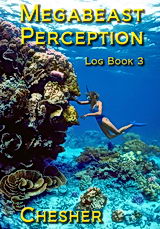Update PNG
Logbook 2 is about Oracles. Oracles can't function without destiny. So the Log is about destiny, too.
The first part, in PNG, is about how Society (PNG and the Food and Agriculture Organization of The United Nations) gets locked into a pattern of behavior and can't turn around even when an Oracle (me) predicts certain failure. Our surveys and observations forewarned the Director and the Chief Research Officer for National Fisheries their development project would ultimately fail. But, locked into what I call, "Communications Momentum," they had no option but to blunder down the road to failure.
Barney Smith, who was the Chief Fisheries Research Officer in PNG, became director of Artisanal Fisheries for the South Pacific Commission, and later returned to a major fisheries post in Australia. He told me what finally happened in Misima. Neil Stanton wrote from Samarai on 10 April 1986 to give me further details of the project.
National Fisheries did build the Misima Fisheries Collection Station. There was a significant cost overrun. The facility operated about two years and closed due to lack of product. The local fishermen refused to sell to the station because of the excessive mark-up when they wanted to buy the fish back in time of need. Fisheries raped the reefs and exported most of the product from PNG. The estimated subsidy for the fish exported from the Misima Station was $K4.50 per kilogram - meaning the people with humanitarian goals who supported the project, and the Government of PNG, paid $K4.50 for every kilogram of fish removed from the people of the Louisiade Archipelago. All exactly as I predicted.
After the plant closed, the surplus equipment went to Neil Stanton's Milne Bay Fishing Authority. They, in turn, leased the equipment to a private firm who sells ice to whoever wants it. They rented the empty buildings. The original program spent $K8 million. Out of the entire grant, Neil Stanton's excellent Milne Bay Fisheries Authority got less than $K300,000.
The United Nations Food and Agriculture Organization dropped the project, but another aid program picked it up. They plan to build the remaining 60 shore stations at an estimated cost of $K14 million. These funds will contribute further to the pulverizing of PNG's coral reefs, social discontent, and crime. The fisheries industry will never be able to repay the funds and the loan will be yet another loss of international investment in the third world.
No surveys, other than the Earthwatch one, were ever done. None of the Earthwatch survey recommendations for sustainable development of the reef fisheries were followed.
Neil said, in his letter, "But as far as I am concerned, the Milne Bay Fishing Authority is still operating and is getting closer and closer to viability even with the lack of funding and with the political interference."
In the 1990's the whole coastal development program collapsed (again) and the new philosophy is closer to Neil's original thesis. Provencial Fisheries now supposedly have the lead in fishery development and the village people are (supposed to be) in on the planning of all new development. No new, grandiose schemes (the new Government vows), but sensible village level development.



